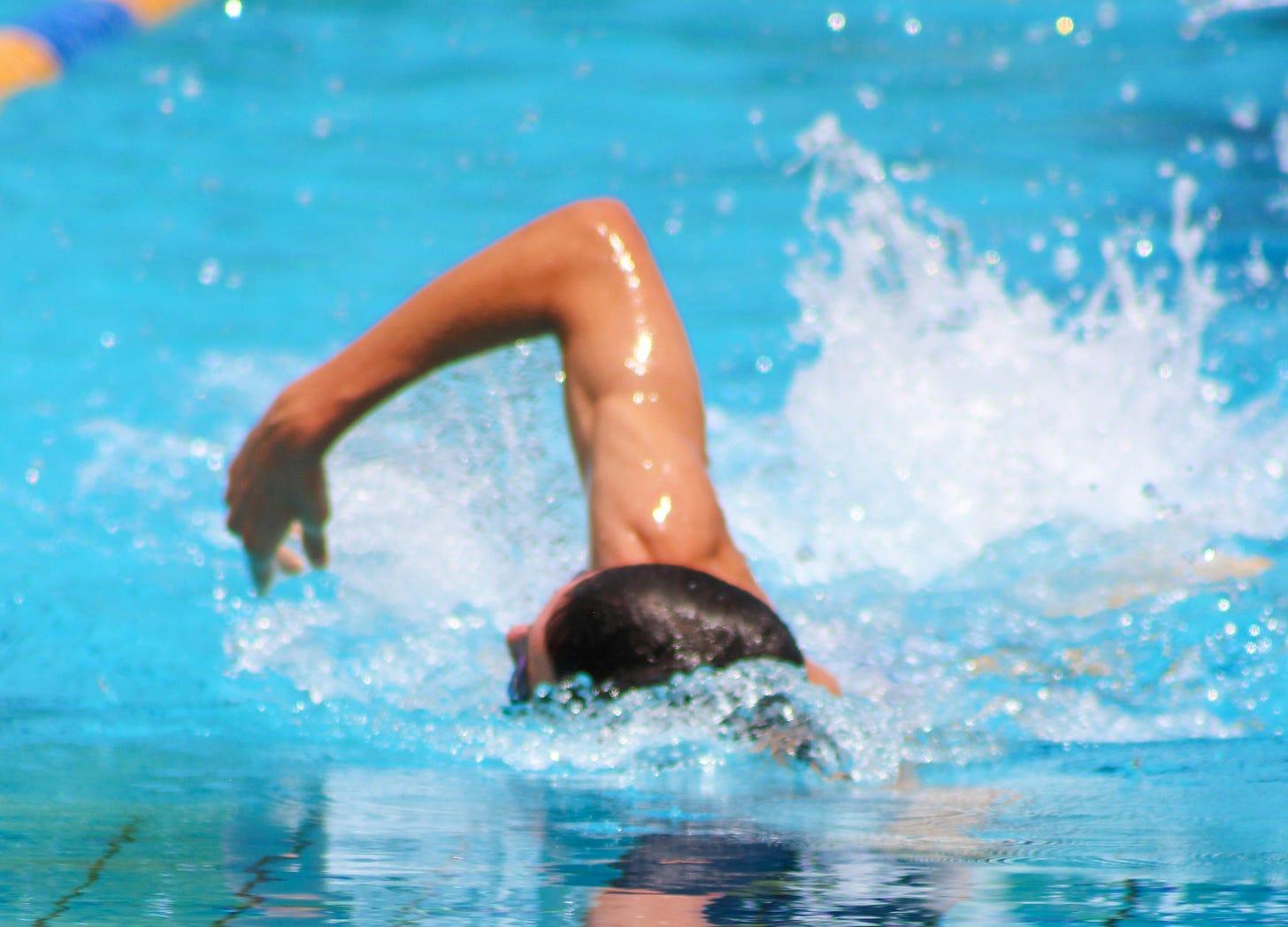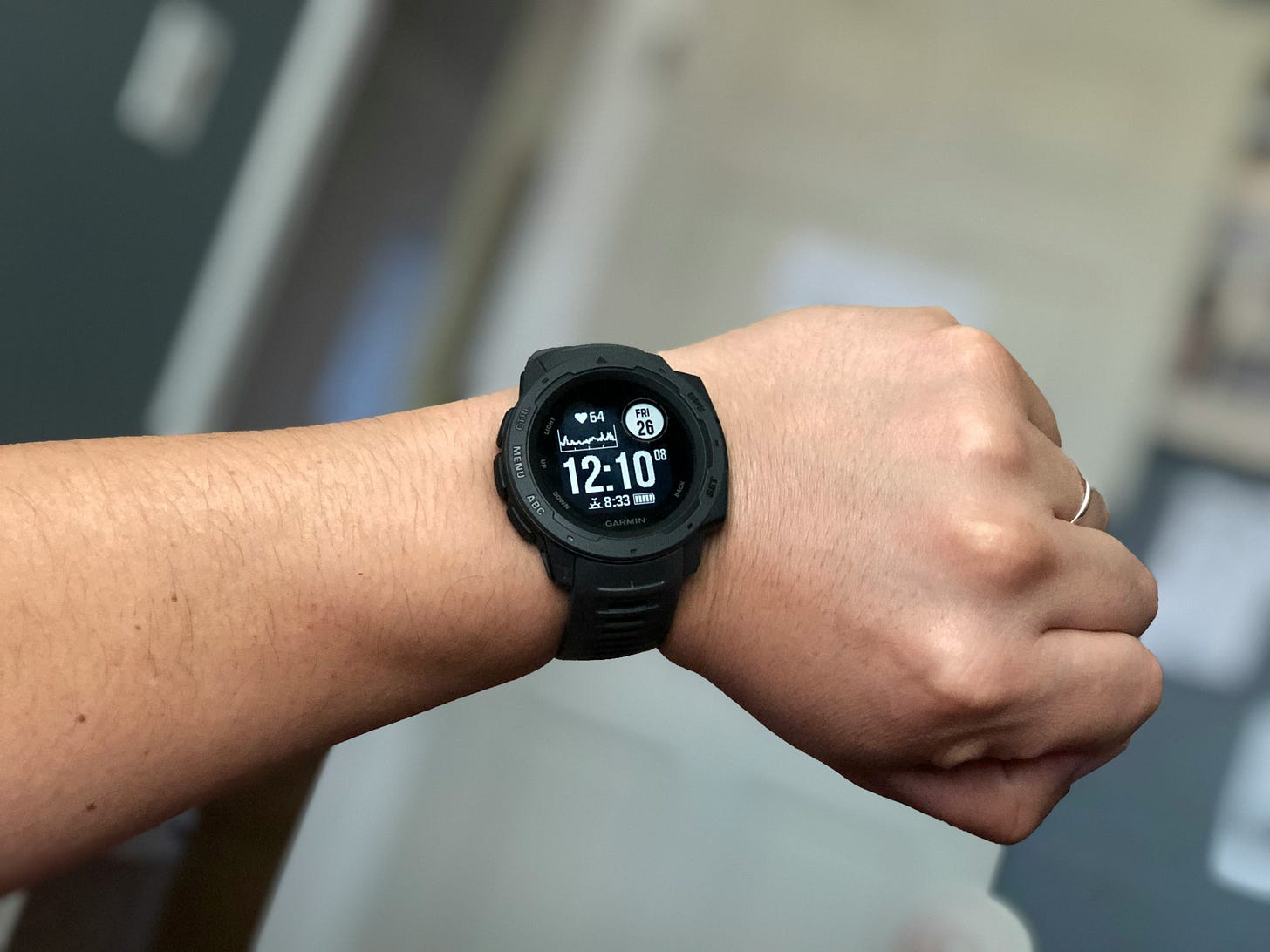Why testing early and often is important
We have all been there: we check the training schedule and there is a test. Either in the pool, on the bike or on the track - it always hurts. Why do it?
Recently, I had three weeks in a row where I did tests for each triathlon leg. It never is easy and you have to be prepared for the effort that’s coming. But it is easier to endure it mentally if you know that it is a very important part of your training. It will give you or your coach a way to better prepare your training, targeting the right zones to see fitness improvement and assess how effective the training as been. Let’s discuss why it is important and how to test yourself properly.
Pool Testing: Assessing Swim Fitness
Why Pool Testing?
Swimming is often the most technically demanding discipline in triathlon. Pool testing helps evaluate your swim fitness, pacing ability, and efficiency in the water. Regular testing ensures your swim training aligns with your race goals and allows you to track improvements in both speed and endurance.
Common Pool Tests
CSS Test (Critical Swim Speed):
What it Measures: Your sustainable pace for long-distance swims.
How to Perform:
Warm up thoroughly with 400–600 meters, including drills and sprints.
Swim 400 meters at maximum effort and record your time.
Rest for 5–10 minutes.
Swim 200 meters at maximum effort and record your time.
Use a CSS calculator or formula: CSS pace = (400m time - 200m time) / 2.
How to Use Results: CSS pace is your target pace for threshold swim sets. For example, intervals like 10x100m or 5x200m should be swum at CSS pace with short rest intervals (e.g., 15–20 seconds).
Time Trials (e.g., 1,000m or 1,500m):
What it Measures: Your endurance and pacing ability over longer distances.
How to Perform: Swim the distance at a consistent, hard effort and record your time.
How to Use Results: Use your average pace per 100 meters to inform long-distance swim training and race pacing.
Swim Efficiency Tests:
What it Measures: Your strokes per length and overall efficiency.
How to Perform:
Swim 100 meters at a moderate pace while counting your strokes per length.
Record your time and stroke count.
Calculate your Stroke Index: (Distance in meters / Stroke Count) × Average Speed.
How to Use Results: Focus on improving technique if your stroke count is high or if your Stroke Index is low.
Tips for Accurate Testing
Use a stopwatch or swim-specific GPS watch for precise timing.
Perform tests in consistent conditions, such as the same pool, lane, and water temperature.
Incorporate drills and technique work into warm-ups to ensure good form during tests.
FTP Testing: Unlocking Cycling Potential
Why FTP Testing?
Functional Threshold Power (FTP) is the gold standard for measuring cycling performance. It represents the maximum power you can sustain for an hour and is crucial for setting power-based training zones. FTP testing is especially important for triathletes, as it helps optimize bike leg performance without compromising the run.
Common FTP Tests
20-Minute FTP Test:
What it Measures: An estimate of your 60-minute FTP.
How to Perform:
Warm up for 10–15 minutes, including a few short sprints to activate your legs.
Ride at maximum sustainable effort for 20 minutes.
Record your average power during the 20-minute effort.
Calculate FTP as 95% of this value: FTP = Avg. Power × 0.95.
How to Use Results: Use your FTP to set training zones:
Zone 1: Recovery (<55% FTP)
Zone 2: Endurance (56–75% FTP)
Zone 3: Tempo (76–90% FTP)
Zone 4: Threshold (91–105% FTP)
Zone 5: VO2 Max (106–120% FTP)
Ramp Test:
What it Measures: FTP based on progressive effort until failure.
How to Perform:
Warm up for 10–15 minutes.
Start pedaling at a low power (e.g., 100 watts) and increase power by 20 watts every minute.
Stop when you can no longer sustain the required power.
FTP is calculated as ~75% of your highest 1-minute power.
Advantages: Shorter and less taxing than the 20-minute test.
Full 60-Minute FTP Test:
What it Measures: Your actual FTP, with no estimation.
How to Perform:
Warm up thoroughly.
Ride at the highest sustainable power you can maintain for 60 minutes.
Record your average power over the hour.
Drawbacks: Mentally and physically demanding; not ideal for most athletes.
Interpreting FTP Results
FTP values vary depending on fitness level and training. For example:
Beginner Cyclists: ~1.5–2.5 watts/kg of body weight.
Intermediate Cyclists: ~2.5–3.5 watts/kg.
Advanced Cyclists/Triathletes: ~3.5–5.0 watts/kg or higher.
Tips for Accurate Testing
Use a smart trainer or power meter for consistent and accurate power measurement.
Perform tests in a controlled environment, such as indoors on a trainer, to eliminate external variables like wind or traffic.
Avoid heavy training the day before testing to ensure fresh legs.
Track Testing: Evaluating Run Fitness
Why Track Testing?
Track testing helps identify your run fitness, establish training paces, and monitor improvements over time. It provides precise data on speed, endurance, and pacing, which are critical for triathlon run performance.
Common Track Tests
5K Time Trial:
What it Measures: Your current run fitness and threshold pace.
How to Perform:
Warm up with 10–15 minutes of easy jogging and dynamic stretches.
Run 5 kilometers at maximum sustainable effort.
Record your time and calculate your average pace per kilometer.
How to Use Results: Use this pace to set training zones:
Zone 1: Recovery (<70% of threshold pace)
Zone 2: Endurance (70–80% of threshold pace)
Zone 3: Tempo (81–90% of threshold pace)
Zone 4: Threshold (91–105% of threshold pace)
Zone 5: VO2 Max (>105% of threshold pace).
1-Mile Repeat Test:
What it Measures: Aerobic capacity and pacing ability.
How to Perform:
Warm up thoroughly.
Run 1 mile at maximum effort.
Rest for 3–5 minutes.
Repeat 2–3 times and calculate your average pace.
How to Use Results: Use your average pace as a benchmark for threshold and interval training.
Lactate Threshold Test:
What it Measures: Your threshold heart rate and pace.
How to Perform:
Warm up with 15 minutes of easy jogging.
Run at a hard, consistent effort for 30 minutes.
Record your average heart rate and pace for the final 20 minutes.
How to Use Results: Use this data to set heart rate zones for training.
Tips for Accurate Testing
Perform tests on a standard 400m track to ensure precise distance measurement.
Use a GPS watch or timing device for accurate pacing and time recording.
Schedule tests during recovery weeks to ensure optimal performance.
Integrating Testing into Your Training Plan
Frequency: Test every 6–8 weeks to monitor progress and adjust training zones.
Timing: Schedule tests during recovery weeks to ensure fresh legs and peak performance.
Analysis: Use the data to identify strengths, weaknesses, and areas for improvement.
Consistency: Keep testing conditions as similar as possible to ensure reliable comparisons over time.






